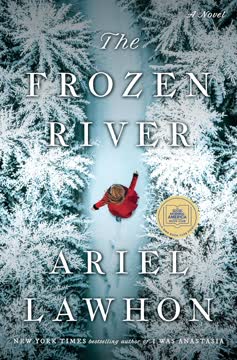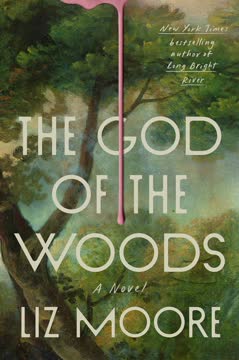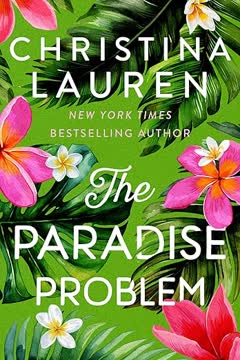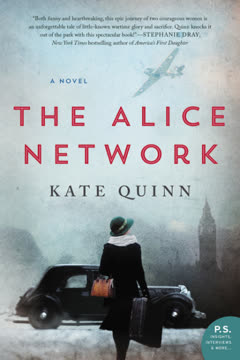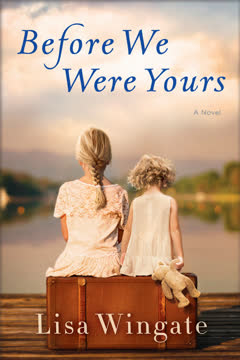Plot Summary
Dust and Dreams
Elsa Wolcott, a tall, awkward, and unloved daughter in 1920s Texas, grows up in a family that values beauty and conformity above all. Marked by childhood illness and her parents' emotional neglect, Elsa finds solace in books and dreams of a life beyond her stifling home. On the eve of her 25th birthday, desperate for meaning and adventure, she rebels by cutting her hair and sewing a daring red dress. A chance encounter with Rafe Martinelli, a charming young Italian farmer, leads to a brief, passionate affair. When Elsa becomes pregnant, her family disowns her, forcing her into a shotgun marriage and a new life on the Martinelli farm. Elsa's journey begins not with hope, but with the ache of being unwanted and the faint glimmer of possibility that she might one day belong.
The Unwanted Daughter
Thrown into the Martinelli family, Elsa faces suspicion and coldness from her new in-laws, especially Rose, Rafe's mother, who mourns the loss of her own dreams for her son. Elsa, determined to prove herself, learns to cook, clean, and work the land, slowly earning Rose's respect. Her marriage to Rafe is loveless and distant; he is a dreamer, restless and dissatisfied, and their union is more a consequence than a choice. Yet, when Elsa gives birth to her daughter, Loreda, she discovers a fierce, transformative love. Motherhood becomes her anchor, and the land—harsh, beautiful, and demanding—offers her a sense of purpose. Still, Elsa remains haunted by her parents' rejection and the fear that she will never truly be enough.
A Marriage of Necessity
Elsa's marriage to Rafe is marked by disappointment and longing. Rafe, unable to reconcile his lost dreams with the reality of farm life, grows increasingly distant, turning to drink and eventually abandoning Elsa and their two children, Loreda and Ant. Elsa is left to shoulder the burdens of the farm and family alone, her only support the gradually warming Rose and Tony, her father-in-law. The Great Depression and relentless drought transform the once-prosperous Texas Panhandle into a dust-choked wasteland. Elsa's resilience is tested daily as she battles poverty, hunger, and the elements, determined to keep her children alive and her family together, even as hope seems to wither with the crops.
Motherhood and the Land
Motherhood becomes Elsa's defining role, and the land her crucible. She toils from dawn to dusk, learning to coax life from the parched earth, finding moments of joy in her children's laughter and the rare kindnesses of her in-laws. The farm, once a symbol of possibility, becomes a prison as the dust storms intensify, animals die, and neighbors abandon their homes. Elsa's relationship with Loreda, once close, is strained by adolescence and the hardships of survival. Loreda idolizes her absent father and resents Elsa's caution and stoicism, while Elsa aches for her daughter's love and understanding. The land, both nurturing and punishing, shapes Elsa into a woman of quiet strength, even as it threatens to break her.
Drought and Despair
The 1930s bring unending drought and dust storms that ravage the Great Plains. The Martinellis, like countless others, face starvation, illness, and the loss of everything they have built. Elsa's son, Ant, falls gravely ill with dust pneumonia, and the family's survival hangs by a thread. When the government offers little help and the land yields nothing, Elsa is forced to make an impossible choice. With Ant's life at stake, she decides to leave Texas, joining the exodus of "Okies" heading west in search of work and salvation in California. The journey is perilous, marked by hunger, exhaustion, and the heartbreak of leaving home and loved ones behind.
The Family Fractures
Rafe's abandonment leaves deep scars on Elsa and her children. Loreda, angry and idealistic, blames Elsa for her father's departure and dreams of escape. The family's trek to California is grueling, with Elsa driving a battered truck across deserts and mountains, clinging to hope and the promise of a better life. Along the way, they encounter other desperate families, witness the cruelty of poverty, and are forced to rely on each other as never before. The journey cements Elsa's role as the sole protector and provider, but the wounds of loss and betrayal fester, especially in Loreda, whose longing for her father and for something more remains unquenched.
The Long Road West
Arriving in California, Elsa and her children are met not with opportunity, but with prejudice, exploitation, and squalor. They are forced to live in filthy migrant camps, working for starvation wages in the fields, and are shunned by the local population. The "land of milk and honey" is a lie; the migrants are seen as a blight, blamed for the state's woes, and denied basic dignity. Elsa struggles to keep her children fed and safe, enduring humiliation and backbreaking labor. Loreda, now a teenager, is radicalized by the injustice she witnesses and the influence of Jack Valen, a charismatic labor organizer. The family's survival depends on Elsa's unyielding determination and the fragile bonds that hold them together.
California's False Promise
Life in the California camps is a daily battle against hunger, disease, and despair. Elsa and Loreda work in the fields, picking cotton and fruit for pennies, trapped in a cycle of debt to the company store. Relief is meager and often withheld; the migrants are at the mercy of the growers, who use violence and eviction to crush dissent. Elsa's friendship with Jean Dewey, another migrant mother, becomes a lifeline, offering comfort and solidarity in the face of relentless hardship. When Jean dies from illness and neglect, Elsa's grief turns to anger, and she begins to question the system that keeps them powerless. Loreda, inspired by Jack and the growing labor movement, urges her mother to join the fight for justice.
Camp of the Forgotten
The migrant camp is both a place of suffering and a crucible of community. Elsa and Loreda witness the deaths of children and friends, the indifference of authorities, and the daily indignities of poverty. Yet, in the midst of despair, they find moments of joy—singing hymns on Christmas, sharing food with neighbors, and dreaming of a better future. Elsa's transformation from a woman who endures to one who resists is gradual but profound. The camp becomes a microcosm of America's broken promises, but also of its potential for solidarity and change. Loreda's rebellious spirit and Elsa's growing courage set the stage for a confrontation with the forces that seek to keep them silent and subjugated.
The Price of Survival
As the Depression deepens, the growers cut wages again and again, using violence and fear to keep the workers in line. Elsa and Loreda, now seasoned pickers, are pushed to the brink. The threat of eviction, hunger, and violence looms over every day. When the state cuts off relief to able-bodied workers, the migrants are left with nothing but their labor and their anger. The seeds of rebellion are sown as Jack and the Workers Alliance organize a strike, urging the workers to demand fair pay and humane treatment. Elsa, once fearful and compliant, finds herself at a crossroads, torn between the need to protect her children and the imperative to stand up for what is right.
The Seeds of Rebellion
The strike is both a desperate gamble and a declaration of dignity. Elsa, Loreda, and their fellow workers risk everything to demand fair wages, sitting down in the fields and refusing to pick. The growers respond with violence, evictions, and the use of vigilantes and police to break the strike. Jack is beaten, Elsa is threatened, and the family is once again made homeless. Yet, the act of resistance transforms Elsa and Loreda, forging a bond of mutual respect and shared purpose. The strike, though ultimately crushed by force, becomes a symbol of the migrants' courage and the possibility of change. Elsa's voice, once silenced by fear and shame, becomes a rallying cry for justice.
Striking for Dignity
The strike reaches its climax as the workers, led by Elsa and Jack, face down the growers, police, and vigilantes. Tear gas and bullets are unleashed on the peaceful protesters. In the chaos, Elsa is shot while protecting her children and the cause she has come to believe in. As she lies dying, she entrusts Loreda with the responsibility to carry on the fight and to remember the power of love and courage. Elsa's death galvanizes the workers and leaves an indelible mark on her children, especially Loreda, who finally understands the depth of her mother's strength and sacrifice.
The Cost of Courage
Elsa's death is both a personal tragedy and a turning point. Loreda, devastated by grief and guilt, is determined to honor her mother's last wish: to return home to Texas and bury her on the land she loved. With the help of Jack, Loreda and Ant make the perilous journey back, carrying Elsa's body and the lessons she imparted. The return to the Martinelli farm is bittersweet; the land is slowly recovering, and Rose and Tony welcome their grandchildren with open arms. The family, though scarred by loss, is made whole again by love and memory.
A Mother's Last Stand
In the years that follow, Loreda grows into a young woman shaped by her mother's example. She becomes the first Martinelli to go to college, carrying with her the hope and resilience that Elsa embodied. The memory of Elsa's courage and the struggles of the migrant workers become a guiding force in Loreda's life. The land, once a source of suffering, is now a place of healing and renewal. Elsa's legacy lives on in her children, in the community she helped inspire, and in the ongoing fight for justice and dignity.
Legacy in the Wind
The novel ends with Loreda standing at Elsa's grave, reflecting on the journey that brought them from the dust-choked plains of Texas to the fields of California and back again. She holds the penny that symbolized hope and the journal that contains her mother's words. As she prepares to leave for college, Loreda feels the presence of her mother and the generations of women who came before her. The story closes with a message of resilience, love, and the enduring power of hope—the four winds that shape and carry us all.
Characters
Elsa Wolcott Martinelli
Elsa is the heart of the novel—a woman marked by childhood illness, parental neglect, and a deep sense of unworthiness. Her journey is one of transformation: from a lonely, bookish "spinster" to a mother and farmwife, and ultimately to a leader and symbol of resistance. Elsa's psychological landscape is shaped by her longing for love and belonging, her fear of rejection, and her gradual discovery of inner strength. Her relationships—with her children, her in-laws, and eventually Jack—reveal her capacity for sacrifice, endurance, and, finally, courage. Elsa's arc is one of self-actualization: she learns to value her own voice, to fight for justice, and to leave a legacy of hope and resilience.
Loreda Martinelli
Loreda is Elsa's daughter, a spirited, intelligent, and restless girl who idolizes her absent father and chafes against her mother's caution. Her adolescence is marked by anger, idealism, and a hunger for something more than survival. Loreda's journey mirrors and diverges from Elsa's: she is shaped by hardship but refuses to accept her lot, becoming radicalized by the injustices she witnesses. Her relationship with Elsa is fraught with conflict and misunderstanding, but ultimately becomes one of deep respect and love. Loreda's coming-of-age is both personal and political; she inherits her mother's courage and becomes the torchbearer for a new generation.
Rafe Martinelli
Rafe is Elsa's husband, a charming but weak-willed man who is unable to reconcile his dreams with the realities of farm life. His restlessness and dissatisfaction lead him to abandon his family, leaving Elsa to bear the burdens alone. Rafe's psychological makeup is defined by escapism, self-pity, and a failure to take responsibility. His absence is a wound that shapes Elsa and Loreda, fueling their struggles and their eventual growth. Rafe is both a product and a casualty of the era's broken promises.
Rose Martinelli
Rose, Rafe's mother, is initially cold and judgmental toward Elsa, mourning the loss of her own dreams for her son. Over time, she becomes Elsa's fiercest ally and a source of wisdom and strength. Rose's character embodies the resilience and pragmatism of immigrant women, her love expressed through action rather than words. Her relationship with Elsa evolves from suspicion to deep, unspoken affection, and she becomes a true mother to Elsa in every way that matters.
Tony Martinelli
Tony is Rose's husband and Rafe's father, a Sicilian immigrant who finds identity and purpose in the land he has tamed. He is a man of few words but deep convictions, embodying the values of hard work, family, and tradition. Tony's relationship with Elsa is one of mutual respect; he recognizes her strength and welcomes her as a true daughter. His steadfastness provides a counterpoint to Rafe's flightiness and grounds the family through crisis.
Ant Martinelli
Ant is Elsa's son, a sweet, energetic boy whose health is threatened by the dust and deprivation of the Dust Bowl. His vulnerability is a constant source of anxiety for Elsa, and his illness becomes the catalyst for the family's migration west. Ant represents the innocence lost in hard times, but also the enduring hope that drives Elsa's sacrifices. His bond with Loreda and Elsa is tender and central to the family's emotional survival.
Jack Valen
Jack is a labor organizer and Communist who becomes a mentor to Loreda and a late-in-life love for Elsa. He is passionate, principled, and willing to risk everything for justice. Jack's presence awakens Elsa's sense of agency and possibility, and his relationship with Loreda inspires her activism. Psychologically, Jack is driven by a sense of mission and a personal history of loss and struggle. He is both a symbol of the era's radical hope and a reminder of the costs of resistance.
Jean Dewey
Jean is a fellow migrant mother and Elsa's closest friend in the California camps. She is warm, humorous, and resilient, offering comfort and solidarity in the face of relentless hardship. Jean's death from illness and neglect is a turning point for Elsa, transforming her grief into anger and spurring her to action. Jean's character highlights the importance of community and the tragedy of preventable loss.
Natalia
Natalia is a sophisticated, fearless Communist organizer who befriends Loreda and Elsa. She is a model of female empowerment, unafraid to speak her mind or challenge authority. Natalia's mentorship helps Loreda find her voice and navigate the dangers of activism. She represents the possibility of solidarity across lines of class, gender, and experience.
Welty
Welty is the owner of the California farm where Elsa and her family work. He is the face of the exploitative system that traps migrants in debt and poverty, using violence and manipulation to maintain control. Welty's psychological makeup is defined by entitlement, greed, and a lack of empathy. He is both a specific antagonist and a symbol of the broader forces arrayed against the powerless.
Plot Devices
Generational Trauma and Resilience
The novel uses the motif of generational trauma—Elsa's rejection by her parents, her own struggles as a mother, and Loreda's coming-of-age—to explore how hardship shapes identity and legacy. The passing of the penny, the journal, and the stories of survival from one generation to the next underscores the theme of resilience. The land itself is both a source of suffering and a symbol of endurance, mirroring the characters' internal landscapes.
The Land as Character
The Dust Bowl and the California fields are not mere settings but active forces in the narrative. The land's transformation from abundance to desolation drives the plot and the characters' choices. The recurring imagery of dust, drought, and wind serves as both literal and metaphorical obstacles, testing the characters' resolve and shaping their destinies.
Mother-Daughter Dynamics
The evolving relationship between Elsa and Loreda is central to the novel's emotional arc. Their misunderstandings, conflicts, and eventual mutual respect mirror the broader struggle for female agency and voice. The narrative structure often alternates perspectives, allowing readers to inhabit both women's inner worlds and witness their growth.
Social Injustice and Collective Action
The plot is propelled by escalating social injustice: economic exploitation, prejudice, and violence. The use of strikes, organizing, and protest as plot devices reflects the historical labor movements of the era. Foreshadowing and mounting tension build toward the climactic confrontation between the workers and the growers, culminating in Elsa's ultimate sacrifice.
Symbolism of Objects
Objects such as the American penny, Elsa's journal, and the family's battered truck serve as symbols of hope, memory, and the possibility of change. The penny, passed from Rose to Elsa to Loreda, encapsulates the theme of enduring hope amid loss. The journal becomes a vessel for Elsa's voice and legacy, bridging the gap between generations.
Analysis
Kristin Hannah's The Four Winds is a sweeping, emotionally charged exploration of endurance, motherhood, and the American dream in the crucible of the Great Depression and Dust Bowl. Through Elsa's journey from unwanted daughter to resilient matriarch and, ultimately, to a symbol of collective resistance, the novel interrogates what it means to survive—and to live with dignity—when the world is stacked against you. The story's power lies in its unflinching portrayal of suffering and its insistence on hope, even when hope seems impossible. Hannah's narrative foregrounds the often-overlooked experiences of women, immigrants, and the working poor, challenging the myth of rugged individualism with a vision of solidarity and shared struggle. The lessons are both historical and urgent: that injustice thrives when the vulnerable are silenced, that courage is born of fear, and that love—messy, imperfect, and enduring—is the force that binds us through the four winds of adversity. The novel's ultimate message is one of resilience: that even in the darkest times, ordinary people can find the strength to stand up, speak out, and change the world for those who come after.
Last updated:
FAQ
Synopsis & Basic Details
What is The Four Winds about?
- A Family's Resilience: The Four Winds follows Elsa Martinelli, a woman who, after a life of parental neglect and a shotgun marriage in 1920s Texas, finds unexpected strength and purpose in motherhood and the harsh realities of farm life. The narrative centers on her unwavering determination to protect her children amidst the devastating Dust Bowl and Great Depression.
- The American Dream Tested: The story chronicles Elsa's perilous journey with her children from the dust-choked Great Plains to the promised land of California, only to find prejudice, exploitation, and a new set of challenges as migrant farmworkers. It explores the brutal realities faced by "Okies" seeking a better life.
- Finding a Voice: Ultimately, the novel is about Elsa's profound transformation from a timid, unloved woman into a fierce advocate for justice, culminating in her courageous stand against systemic oppression and her legacy of love and resilience passed on to her daughter, Loreda.
Why should I read The Four Winds?
- Emotional Depth & Historical Insight: Readers should delve into The Four Winds for its deeply emotional portrayal of a family's struggle for survival against overwhelming odds, offering a visceral understanding of the human cost of the Dust Bowl and Great Depression. It provides a powerful, often overlooked, perspective on American history.
- Inspiring Female Protagonist: Elsa Martinelli's journey from self-doubt to unwavering courage is profoundly inspiring, showcasing the strength and resilience of women who fought to protect their families and find their voice in a man's world. Her transformation is a central theme in The Four Winds analysis.
- Timeless Themes of Hope & Love: Beyond the historical setting, the novel explores universal themes of love, sacrifice, belonging, and the enduring power of hope, making it a resonant and unforgettable reading experience that prompts reflection on what truly matters in life.
What is the background of The Four Winds?
- The Dust Bowl Era: The novel is set against the backdrop of the 1930s Dust Bowl, a period of severe dust storms and drought that devastated the Great Plains, forcing millions of farmers, often called "Okies" (regardless of their state of origin), to migrate west, primarily to California, in search of work. This environmental disaster is a central element in The Four Winds explained.
- Great Depression's Impact: The economic ravages of the Great Depression, including widespread unemployment, plummeting crop prices, and bank foreclosures, exacerbated the suffering of rural Americans, driving the mass exodus depicted in the book. The novel highlights the systemic injustices faced by the working poor.
- Migrant Labor & Social Unrest: In California, the influx of desperate migrants led to overcrowded, unsanitary camps, exploitative labor practices by large growers, and rising social tensions. The book touches on the nascent labor movements and the rise of Communist organizing among farmworkers, reflecting a turbulent period of class struggle and calls for social justice.
What are the most memorable quotes in The Four Winds?
- "Hope is a coin I carry: an American penny, given to me by a man I came to love.": This opening line, repeated by Elsa, encapsulates the novel's central theme of enduring hope amidst profound hardship, symbolizing the small, tangible anchors that keep one going when all else is lost. It foreshadows the penny's significance as a family talisman.
- "A warrior believes in an end she can't see and fights for it. A warrior never gives up. A warrior fights for those weaker than herself. It sounds like motherhood to me.": This quote, from Elsa's journal, powerfully redefines "warrior" through the lens of maternal strength and sacrifice, elevating the everyday struggles of women into acts of profound courage and resistance. It's a key insight into Elsa's motivations.
- "Hard times don't last. Land and family do.": Uttered by Rose Martinelli, this phrase becomes a recurring mantra of resilience and endurance, emphasizing the deep connection to heritage and the unwavering bonds of kinship that sustain the characters through unimaginable adversity. It highlights core themes in The Four Winds.
What writing style, narrative choices, and literary techniques does Kristin Hannah use?
- Evocative and Immersive Prose: Hannah employs a descriptive and emotionally resonant writing style that immerses the reader in the harsh realities of the Dust Bowl and migrant camps, using vivid imagery to convey the sensory experience of dust, heat, and hunger. Her prose often evokes a sense of raw, visceral struggle.
- Dual Perspective & Character-Driven Narrative: While primarily focusing on Elsa's journey, the narrative occasionally shifts to Loreda's perspective, particularly in later chapters, allowing for a deeper exploration of the mother-daughter dynamic and the generational impact of hardship. This choice highlights contrasting viewpoints and evolving character motivations.
- Symbolism and Foreshadowing: Hannah skillfully weaves in recurring symbols like the American penny, the land itself, and specific objects (e.g., the red dress, the journal) to deepen thematic meaning and foreshadow character development or plot turns. The constant presence of the "four winds" (dust, drought, despair, and hope) acts as a pervasive motif.
Hidden Details & Subtle Connections
What are some minor details that add significant meaning?
- Elsa's Childhood Illness: The rheumatic fever at fourteen, which her parents used to label her as "fragile" and "unmarriageable," is a subtle but crucial detail. It establishes her deep-seated insecurity and fear of inadequacy, which she battles throughout her life, making her eventual acts of courage even more profound. "Her family repeatedly told her that it was the illness she'd survived in childhood that had transformed her life and left it fragile and solitary." (Chapter 1)
- The Red Silk Dress: Elsa's purchase and creation of the red silk dress is her first overt act of rebellion and desire for a different life. Its subsequent confiscation by her mother and appearance on her sisters ("Suzanna was wearing a blouse made from Elsa's red silk. Charlotte wore a red silk scarf at her throat.") subtly underscores her family's continued control and appropriation of her desires, highlighting her initial powerlessness.
- Ant's Lost Tooth: When Ant loses a tooth and Nurse Sally suggests he swallowed it, it's a small, seemingly innocuous detail. However, it subtly foreshadows the pervasive nature of the dust and its internal damage, hinting at the silicosis that will later gravely sicken him, connecting a childhood milestone to a looming health crisis.
What are some subtle foreshadowing and callbacks?
- Grandpa Walt's "Be Brave" Mantra: Elsa's beloved grandfather's repeated advice, "Don't worry about dying, Elsa. Worry about not living. Be brave," (Chapter 1) serves as a constant internal callback, guiding her choices and providing a moral compass as she faces increasingly difficult decisions, culminating in her ultimate act of bravery.
- Rafe's "Anywhere But Here": When Rafe tells the ticket agent he wants to go "Anywhere but here," (Chapter 10) it subtly foreshadows his deep-seated restlessness and inability to commit, which ultimately leads to his abandonment of the family. This phrase encapsulates his escapist motivation, a key aspect of Rafe Martinelli's character analysis.
- The Dying Cottonwood Tree: The town of Lonesome Tree's namesake cottonwood, described as "dying" and looking "a little worse" with each visit (Chapter 6), subtly foreshadows the impending death of the land and the community itself, mirroring the slow decline of hope and prosperity in the Dust Bowl.
What are some unexpected character connections?
- Elsa and Jack's Shared Loneliness: Beyond their romantic connection, Elsa and Jack share a profound, unspoken understanding of loneliness and being "unbalanced" by life. Jack's comment, "You've unbalanced me, Elsa," (Chapter 33) and his backstory about his mother's struggles, reveal a deeper, unexpected connection rooted in shared experiences of hardship and a desire for belonging.
- Rose and Jean Dewey's Parallel Motherhood: While from different backgrounds, Rose and Jean Dewey, both mothers who experience profound loss and hardship, form an unexpected bond with Elsa. Their shared understanding of maternal sacrifice and grief ("Mothers and daughters. We save each other, sì?" - Rose, Chapter 16; Jean's death and Elsa's subsequent rage, Chapter 24) highlights the universal struggles of women in adversity, transcending cultural differences.
- Loreda and Jack's Shared Rebel Spirit: Loreda's immediate connection with Jack Valen is not just a mentor-mentee relationship but a mirroring of their rebellious spirits. Jack recognizes the "fire" in Loreda ("There's fire in you, kid. Don't let the bastards put it out." - Chapter 25), seeing in her the same defiance and passion that drives his own activism, creating an unexpected alliance against injustice.
Who are the most significant supporting characters?
- Jean Dewey: More than just a friend, Jean represents the vital community and solidarity among the migrants. Her warmth, humor, and eventual tragic death from illness (Chapter 24) serve as a powerful catalyst for Elsa's transformation from passive endurance to active resistance, highlighting the devastating human cost of the camps.
- Mrs. Quisdorf (Librarian): This seemingly minor character plays a crucial role in nurturing Loreda's intellectual and rebellious spirit. By providing her with books like The Secret of the Old Clock and Ten Days That Shook the World (Chapter 23, 28), and offering quiet encouragement, Mrs. Quisdorf symbolizes the enduring power of education and knowledge as a path to empowerment, even in the harshest conditions.
- Natalia (Communist Organizer): Natalia serves as a sophisticated and fearless mentor figure, particularly for Loreda. Her elegance, boldness, and unwavering commitment to social justice ("A girl who thinks for herself." - Chapter 27) offer a powerful alternative model of womanhood to Elsa's traditional upbringing, influencing Loreda's activism and broadening Elsa's understanding of collective action.
Psychological, Emotional, & Relational Analysis
What are some unspoken motivations of the characters?
- Elsa's Quest for Unconditional Love: Elsa's deepest, unspoken motivation is a lifelong yearning for unconditional love and acceptance, stemming from her parents' constant disapproval. Her initial affair with Rafe, her desperate "Yes" to his question of "Love you?" (Chapter 2), and her fierce devotion to her children are all driven by this fundamental need to be loved and to belong, a core aspect of Elsa's motivations.
- Rafe's Fear of Failure: Rafe's restlessness, drinking, and ultimate abandonment are subtly motivated by a profound fear of failure and an inability to reconcile his grand dreams with the harsh realities of farm life. His statement, "I'm dying here, that's all I know. One more day on this farm and I might put a gun to my head," (Chapter 10) reveals a deep psychological fragility and an unspoken desperation to escape a life he feels inadequate to lead.
- Loreda's Search for Agency: Loreda's anger and rebellious spirit are fueled by an unspoken desire for agency and control over her own life, a stark contrast to her mother's initial passivity. Her idolization of her father and subsequent disillusionment, coupled with the injustices she witnesses, motivate her to seek a path where she can actively fight for change, rather than merely endure.
What psychological complexities do the characters exhibit?
- Elsa's Internalized Shame vs. Fierce Protection: Elsa grapples with a complex internal conflict between her deeply ingrained sense of unworthiness ("Her parents had been right about her all along." - Chapter 10) and a fierce, almost primal, protective instinct for her children. This duality drives her endurance and her eventual transformation into a "warrior" who fights for others, despite her personal fears.
- Loreda's Idealism vs. Harsh Reality: Loreda exhibits the psychological complexity of a teenager whose idealism clashes violently with the brutal realities of poverty and injustice. Her initial belief in her father's dreams and her subsequent rage at his abandonment ("You drove him away." - Chapter 7) and the world's unfairness ("This is America. How can this be happening to us?" - Chapter 19) showcase a struggle to reconcile her expectations with a harsh, unforgiving world.
- Tony's Stoicism and Hidden Grief: Tony Martinelli, the steadfast patriarch, embodies a stoic resilience, but beneath his quiet exterior lies a profound grief for his dying land and lost dreams. His almost religious devotion to the farm ("This land: he said it the way Father Michael said God." - Chapter 6) reveals a deep psychological connection to his heritage, making his eventual acceptance of leaving Texas a testament to his love for his grandchildren.
What are the major emotional turning points?
- Loreda's Birth and Elsa's Awakening Love: The birth of Loreda is a pivotal emotional turning point for Elsa, as it awakens in her a "fierce, transformative love" (Chapter 2) that anchors her and gives her purpose. This moment marks the beginning of her self-discovery and her shift from being defined by others' disapproval to finding intrinsic worth in motherhood.
- Rafe's Abandonment and Elsa's Despair: Rafe's departure is a devastating emotional blow, plunging Elsa into a deep despair that forces her to confront her deepest fears of being unloved and inadequate. Her inability to cry initially, followed by a profound sense of betrayal and the realization that "Her parents had been right about her all along" (Chapter 10), marks a low point that ultimately fuels her resolve to survive for her children.
- Jean Dewey's Death and Elsa's Rage: Jean Dewey's death from preventable illness and neglect is a critical emotional turning point for Elsa. Her grief transforms into a righteous anger ("Enough is goddamned enough." - Chapter 32) that shatters her long-held passivity and propels her into action, leading her to confront the systemic injustices and join the fight for workers' rights.
How do relationship dynamics evolve?
- Elsa and Rose: From Suspicion to Unspoken Matriarchy: The relationship between Elsa and Rose evolves from initial suspicion and coldness ("Mrs. Martinelli looked up. The small woman was a study in contradictions: she moved with the fast, furtive motions of a bird and looked fragile, but Elsa's overwhelming impression was of strength." - Chapter 5) to a deep, unspoken bond of mutual respect and affection. Rose becomes Elsa's surrogate mother, offering practical wisdom and emotional support, culminating in Rose's declaration, "You are the daughter I always wanted." (Chapter 16)
- Elsa and Loreda: From Conflict to Mutual Admiration: The mother-daughter dynamic is fraught with conflict, as Loreda's adolescent anger and idealism clash with Elsa's cautious endurance. Loreda initially blames Elsa for their hardships ("You drove him away." - Chapter 7), but through shared suffering and Elsa's courageous actions, their relationship transforms into one of profound understanding and mutual admiration. Loreda's final words, "You gave me wings, Mom. Did you know that?" (Epilogue), signify her deep appreciation for Elsa's sacrifices.
- Elsa and Jack: A Late-Life Awakening of Love: Elsa's relationship with Jack Valen represents a late-life awakening of passion and self-worth. Their connection is built on shared ideals and a mutual recognition of strength and vulnerability. Jack's perception of Elsa as a "warrior" and his ability to make her feel "beautiful" (Chapter 29) challenge her lifelong insecurities, leading to a profound and intimate bond that transcends the harsh realities of their lives.
Interpretation & Debate
Which parts of the story remain ambiguous or open-ended?
- Rafe's Ultimate Fate: The novel leaves Rafe Martinelli's ultimate fate ambiguous after his abandonment. While the ticket agent suggests he went "West" and "ain't seen one of 'em come back yet" (Chapter 10), his specific whereabouts, well-being, or any potential remorse remain unknown. This ambiguity emphasizes the finality of his choice and the family's need to move on without him.
- The Long-Term Impact of the Strike: While the novel depicts the immediate outcome of the strike (Elsa's death, the workers' temporary victory in occupying the fields), the long-term success or failure of the labor movement in the San Joaquin Valley remains open-ended. The narrative focuses on the act of resistance itself, rather than a definitive historical resolution, leaving the reader to ponder the ongoing struggle for workers' rights.
- The Future of the American Dream: The novel concludes with Loreda heading to college, embodying a renewed sense of hope and the continuation of the American Dream. However, the broader question of whether the systemic injustices faced by migrants were truly overcome, or if the "land of milk and honey" ever fully delivered on its promise for all, remains a subtle ambiguity, reflecting the complex and ongoing nature of social progress.
What are some debatable, controversial scenes or moments in The Four Winds?
- Elsa's Initial Passivity and Self-Blame: Readers might debate Elsa's prolonged passivity and self-blame in the early parts of the novel, particularly her acceptance of her parents' and Rafe's treatment. Her internal monologue, "It was her own fault, somehow, her doing, even though in all her desperate musings for the foundation of it, she'd never been able to see the flaw in herself" (Chapter 10), can be seen as frustrating, prompting discussion on the psychological impact of abuse and societal expectations on women.
- Loreda's Harshness Towards Elsa: Loreda's consistent anger and cruel remarks towards her mother, especially after Rafe's departure ("This is all your fault." - Chapter 7; "You're a coward, staying here, making us stay here." - Chapter 24), can be controversial. While understandable given her age and trauma, her words highlight the complex and often painful dynamics of grief and blame within families, sparking debate on the fairness of her accusations.
- The Robbery of the Company Store: Loreda's decision to rob the company store at gunpoint (Chapter 36) is a morally ambiguous act. While driven by desperation to fund her mother's burial and the family's return to Texas, it crosses a line into criminal behavior. This scene invites debate on whether the ends justify the means, especially when faced with extreme poverty and systemic exploitation.
The Four Winds Ending Explained: How It Ends & What It Means
- Elsa's Sacrifice and Legacy: The novel culminates in Elsa's death, shot while leading the cotton pickers' strike. Her final act is one of profound sacrifice, embodying the "warrior" spirit she discovered within herself. Her death is not a defeat but a powerful catalyst, solidifying the strike and inspiring those around her. It means her personal journey of finding her voice and courage culminates in a public act of defiance, leaving a legacy of strength and selflessness.
- Loreda's Inheritance of Hope and Purpose: Loreda, initially devastated by her mother's death, is entrusted with the American penny—a symbol of enduring hope—and Elsa's journal, which contains her mother's newfound wisdom. This inheritance signifies Loreda's acceptance of her mother's legacy and her own path forward. The ending means Loreda will carry forward the fight for justice and the pursuit of a better life, not through escapism like her father, but through education and activism, embodying the resilience of the next generation.
- Return to Roots and Enduring Love: The family returns to the Martinelli farm in Texas, fulfilling Elsa's unspoken wish to be buried on the land she came to love. This return symbolizes healing and the enduring power of family and roots. The final lines, "Love is what remains," and Loreda's reflection on Elsa as a "warrior," underscore that despite immense loss and hardship, the bonds of love and the lessons learned from adversity are the true, lasting legacies that shape identity and provide courage for the future. This ending provides a powerful resolution to the themes in The Four Winds.
Review Summary
The Four Winds received mixed reviews, with many praising its powerful depiction of the Dust Bowl era and the Great Depression. Readers appreciated the well-developed characters, particularly the resilient protagonist Elsa. Some found the book emotionally impactful and historically enlightening. However, critics noted its excessive length, repetitive descriptions, and emotionally manipulative ending. Some readers felt the political themes were heavy-handed, while others appreciated the social commentary. Despite its flaws, many considered it a compelling and heartbreaking story of survival and motherhood.
Similar Books
Download PDF
Download EPUB
.epub digital book format is ideal for reading ebooks on phones, tablets, and e-readers.

